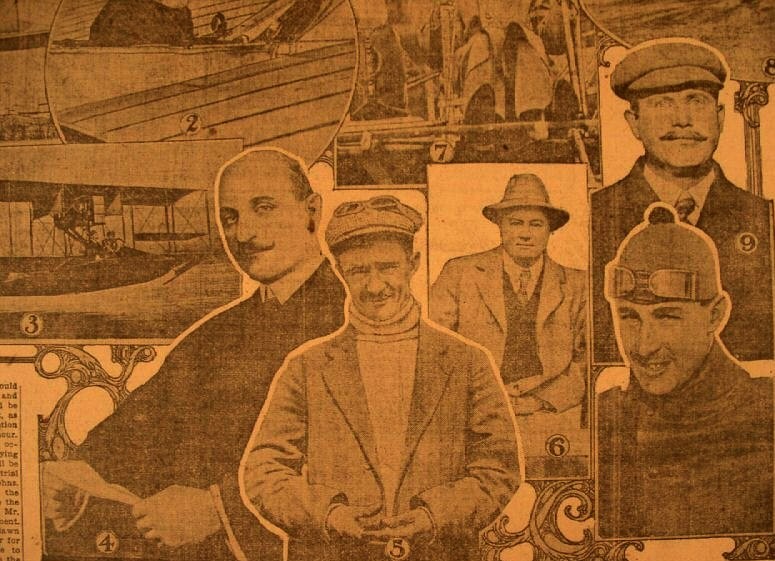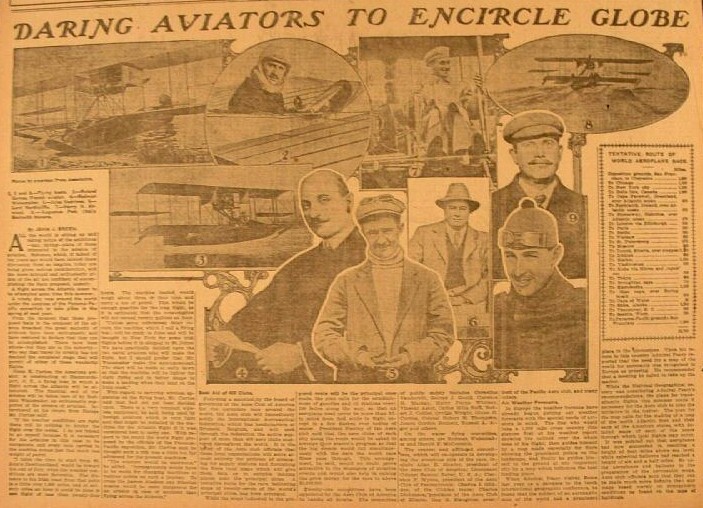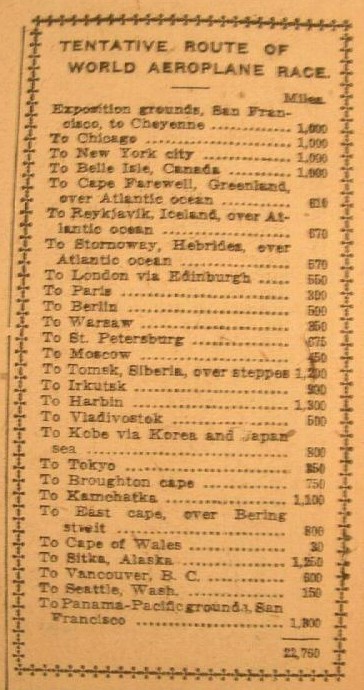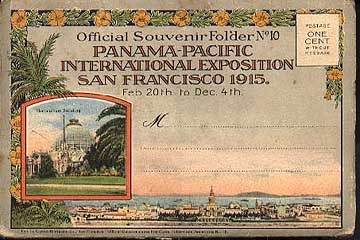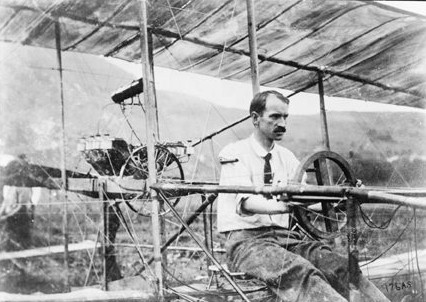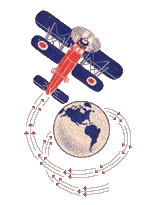
Round-the-World Flights
"Daring Aviators to Encircle Globe"
Page 1bb (rev: 1001)




On December 16, 1907 the US Navy left Hampton Roads, VA and began a diplomatic cruise round-the-world. People began to think globally. People increased their travel outside the boundaries of their countries. People began to use the mails to correspond with family and friends all over the world.
If mail could travel round-the-world & people could travel round-the-world, why couldn't men fly round-the-world? In1910 a fictional account of a seven day flight round-the-world was written detailing the exploits of Lieutenant Thesiger Smith. He dared to pilot this first circumnavigation of the globe in a pioneer aeroplane including his many side adventures along the way.
In 1914 the time was right for serious pilots to enter the public arena turning dreams into reality for an aerial circumnavigation of the globe. Lunatic schemes in the past were turning into serious considerations for the present. A ninety day race round-the-world under the auspices of the Panama-Pacific Exposition was proposed to be initiated in the spring of 1915. Details of this proposed round-the-world circumnavigation were outlined in the March 1, 1914 issue of the Fort Wayne Journal-Gazette under the title, "Daring Aviators to Encircle the Globe."
Glenn H Curtiss was to supply a flying boat capable of crossing the Atlantic Ocean. It would have to be capable of flying for 24 continuous hours with a one ton fuel load and flown by two naval aviators. Other pilots mentioned in this article included, Roland Garros and Jules Vedrines (France), Harry Atwood, Augustus Post and Beckwith Havens (US).
Rodman Wanamaker, enthusiastic supporter of the science of aviation would finance the RTW project. A prize of one million dollars was to be offered to the winning pilots.
Arrangements would have to be made for changing aeroplanes at various points on the journey path. Weather conditions were envisioned to be acceptable for an Atlantic crossing in July 1915 from Labrador to Scotland.
The Aero Club of America would sanction this circumnavigation in conjunction with the International Aeronautical Federation (Belgium) and would seek the active support of more than 400 aero clubs scattered throughout the world. These clubs would furnish local maps and determine suitable landing places near principle cities along the flight path. The proposed world flight path was plotted by BJS Cahill on his Octahedral Projection "Butterfly" World Map. Cahill won a gold medal at the Panama-Pacific Exposition for his "Butterfly" map projection. Stops at 28 principle cities were envisioned. This round-the-world dream never happened.
Proposed Itinerary:
Depart Panama-Pacific Exposition, San Francisco CA
Cheyenne WY
Chicago IL
New York NY
Belle Isle Canada
Cape Broughton Labrador
Cape Farewell Greenland
Reykjavik Iceland
Stornoway Hebrides Scotland
Edinburgh Scotland
London England
Paris France
Berlin Germany
Warsaw Poland
Saint Petersburg Russia
Moscow Russia
Tornsk Siberia Russia
Irkutsk Siberia Russia
Harbin China
Viadivostok Russia
Hanseong (Seoul) Korea
Kobe Japan
Tokyo Japan
Kamchatka Peninsula Russia
East Cape (Bering Sea)
Cape of Wales Alaska
Sitka Alaska
Vancouver British Columbia Canada
Seattle WA
Arrive Panama-Pacific Exposition, San Francisco CA

RETURN to Home Page.

